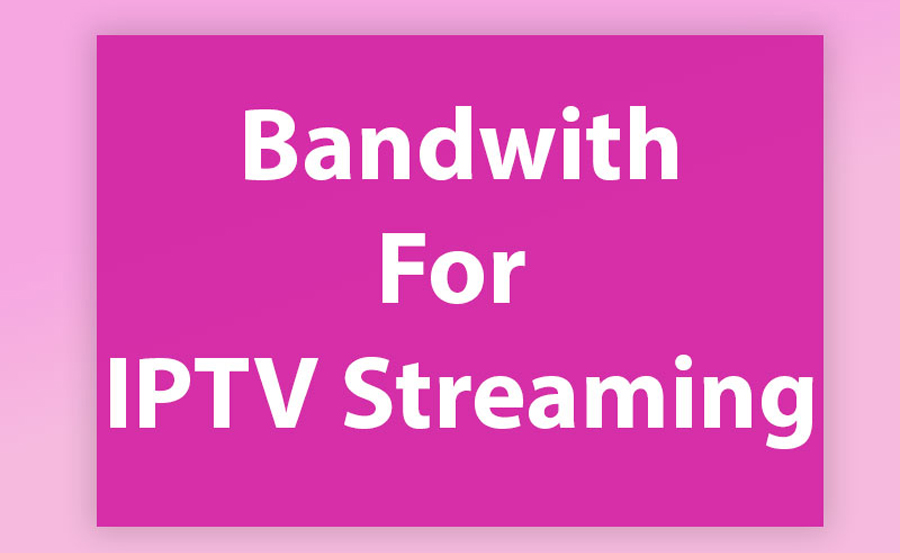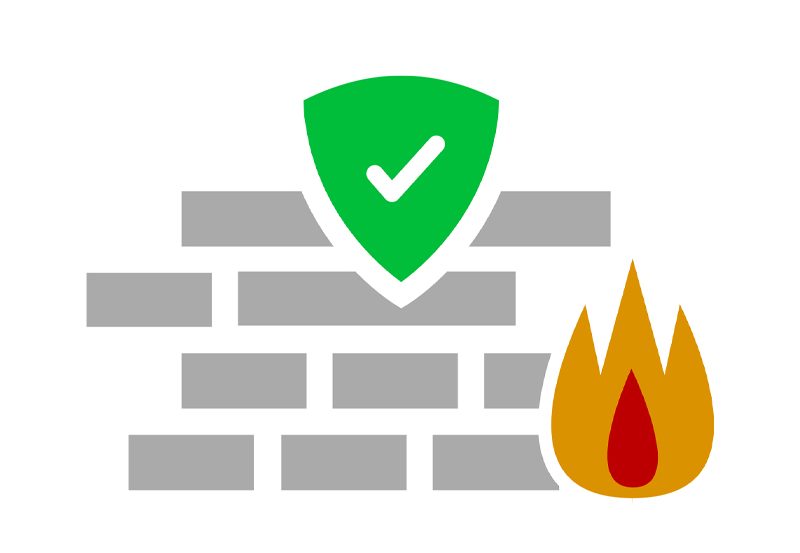IPTV (Internet Protocol Television) delivers television services via the Internet protocol suite over packet-switched networks, primarily the internet. This method differs from traditional terrestrial, satellite, and cable television formats, offering a more interactive and customizable viewing experience with high-quality video and audio content. Bandwidth, which refers to the maximum data transfer rate of a network or internet connection, is crucial for IPTV functionality.
Several factors influence the bandwidth requirements for IPTV:
1. Video resolution and quality
2. Number of simultaneous streams
3.
Network congestion
4. TV protocol used
Understanding these factors helps viewers ensure they have sufficient network resources to support their IPTV viewing needs. Adequate bandwidth is essential for a smooth and uninterrupted IPTV experience.
Key Takeaways
- IPTV requires a stable and high-speed internet connection to deliver high-quality streaming content.
- TV protocols such as UDP, RTP, and RTSP are used for IPTV streaming and require specific bandwidth for optimal performance.
- Bandwidth requirements for IPTV depend on factors such as video resolution, compression, and the number of simultaneous streams.
- Inadequate bandwidth can result in buffering and poor streaming quality, impacting the viewing experience.
- Bandwidth directly affects the picture and sound quality of IPTV, with higher bandwidth allowing for better resolution and audio fidelity.
TV Protocols: What You Need to Know
HTTP: The Most Commonly Used Protocol
HTTP, or Hypertext Transfer Protocol, is the most commonly used protocol for delivering web content, including video streaming. It is a reliable and widely supported protocol that is capable of delivering high-quality video content over the internet. However, HTTP streaming typically requires a larger amount of bandwidth in order to deliver high-definition video content without buffering or interruptions.
RTSP: Designed for Streaming Media
RTSP, or Real-Time Streaming Protocol, is another commonly used TV protocol for delivering video content over the internet. RTSP is designed specifically for streaming media and is capable of delivering live or on-demand video content with low latency and high quality. However, RTSP streaming also requires a significant amount of bandwidth in order to deliver high-definition video content without buffering or interruptions.
UDP: Connectionless and Efficient
Finally, UDP, or User Datagram Protocol, is a connectionless protocol that is often used for live video streaming and other real-time applications. UDP streaming is capable of delivering high-quality video content with low latency and minimal buffering, but it also requires a stable and high-bandwidth network connection in order to function properly.
Bandwidth: How Much is Enough for IPTV?
When it comes to determining how much bandwidth is enough for IPTV, there are several factors that need to be taken into consideration. The first factor to consider is the resolution and quality of the video content being streamed. Higher resolution and higher quality video content require more bandwidth in order to be delivered without buffering or interruptions.
For example, streaming standard definition (SD) video content typically requires a minimum bandwidth of 2-4 Mbps, while streaming high definition (HD) video content may require a minimum bandwidth of 5-8 Mbps or more. Another factor to consider is the number of simultaneous streams being accessed. If multiple devices are accessing IPTV streams at the same time, the overall bandwidth requirements will increase accordingly.
Additionally, network congestion can also impact the amount of bandwidth needed for IPTV. During peak usage times, such as in the evenings when many people are streaming video content, network congestion can reduce available bandwidth and impact the quality of IPTV streams. In order to ensure a smooth and uninterrupted IPTV viewing experience, it is important to have enough bandwidth to support the resolution and quality of the video content being streamed, as well as the number of simultaneous streams being accessed.
Buffering: The Impact of Bandwidth on Streaming
One of the most common issues that can arise when streaming IPTV content is buffering. Buffering occurs when there is not enough available bandwidth to support the continuous delivery of video content, resulting in pauses or interruptions in the playback of the stream. This can be frustrating for viewers and can significantly impact the overall viewing experience.
The amount of available bandwidth directly impacts the likelihood of buffering occurring during IPTV streaming. If there is not enough bandwidth available to support the resolution and quality of the video content being streamed, buffering is likely to occur. In order to minimize buffering during IPTV streaming, it is important to ensure that there is enough available bandwidth to support the resolution and quality of the video content being streamed.
This may require upgrading to a higher-speed internet connection or prioritizing network resources for IPTV streaming. Additionally, reducing network congestion and optimizing network performance can also help to minimize buffering during IPTV streaming. By addressing these factors and ensuring that there is enough available bandwidth to support IPTV streaming needs, viewers can enjoy a smooth and uninterrupted viewing experience without buffering interruptions.
Quality: How Bandwidth Affects IPTV Picture and Sound
The quality of IPTV picture and sound is directly impacted by the amount of available bandwidth. Higher resolution and higher quality video content require more bandwidth in order to be delivered without compression or degradation in picture quality. Similarly, high-quality audio content also requires sufficient bandwidth in order to be delivered without compression or degradation in sound quality.
If there is not enough available bandwidth to support the resolution and quality of the video and audio content being streamed, viewers may experience pixelation, artifacting, or loss of detail in the picture, as well as distortion or loss of clarity in the sound. In order to ensure high-quality picture and sound during IPTV streaming, it is important to have enough available bandwidth to support the resolution and quality of the video and audio content being streamed. This may require upgrading to a higher-speed internet connection or prioritizing network resources for IPTV streaming.
Additionally, reducing network congestion and optimizing network performance can also help to ensure high-quality picture and sound during IPTV streaming. By addressing these factors and ensuring that there is enough available bandwidth to support IPTV streaming needs, viewers can enjoy a high-quality viewing experience with clear picture and sound.
Network: Ensuring a Stable Connection for IPTV
In addition to having enough available bandwidth, it is also important to ensure a stable network connection for IPTV streaming. A stable network connection is crucial for minimizing interruptions and buffering during IPTV streaming, as well as ensuring high-quality picture and sound. There are several factors that can impact the stability of a network connection, including network latency, packet loss, and jitter.
Network latency refers to the delay in data transmission between devices on a network, while packet loss refers to the loss of data packets during transmission. Jitter refers to variations in packet arrival times, which can impact the consistency of data delivery. In order to ensure a stable network connection for IPTV streaming, it is important to address these factors and optimize network performance.
This may involve using a wired Ethernet connection instead of a wireless connection, prioritizing network resources for IPTV streaming, or using Quality of Service (QoS) settings to prioritize IPTV traffic on a home network. Additionally, reducing network congestion and optimizing network performance can also help to ensure a stable connection for IPTV streaming. By addressing these factors and ensuring a stable network connection, viewers can enjoy a smooth and uninterrupted viewing experience with high-quality picture and sound.
Finding the Right Balance of Bandwidth for IPTV Viewing
In conclusion, finding the right balance of bandwidth for IPTV viewing is crucial for ensuring a smooth and uninterrupted viewing experience with high-quality picture and sound. By understanding the various factors that impact bandwidth requirements for IPTV, such as resolution and quality of video content, number of simultaneous streams, and network congestion, viewers can ensure that they have enough available bandwidth to support their IPTV streaming needs. Additionally, addressing factors such as buffering and network stability can help to minimize interruptions and ensure a high-quality viewing experience.
Ultimately, finding the right balance of bandwidth for IPTV viewing may require upgrading to a higher-speed internet connection, prioritizing network resources for IPTV streaming, or optimizing network performance. By addressing these factors and ensuring that there is enough available bandwidth to support IPTV streaming needs, viewers can enjoy a smooth and uninterrupted viewing experience with high-quality picture and sound. As technology continues to advance and demand for high-quality video content grows, having enough available bandwidth will become increasingly important for supporting IPTV viewing needs.
If you’re interested in learning how to set up IPTV on different devices, you may want to check out this article on how to set up IPTV on Perfect Player. It provides step-by-step instructions on how to install and configure IPTV on this popular media player. Understanding the bandwidth requirements for IPTV is crucial for a smooth streaming experience, and this article can help you get started with the setup process.





